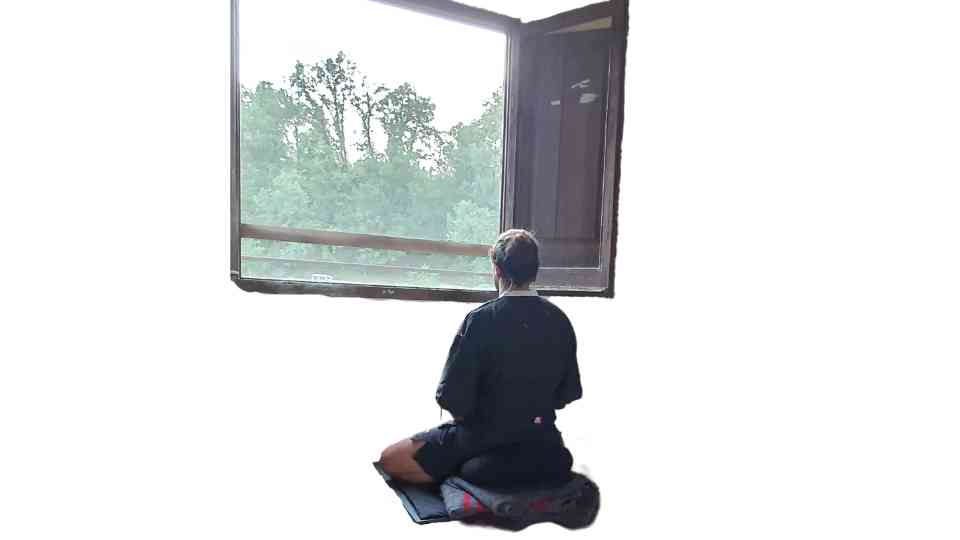More and more people are asking how to learn to meditate on their own because they know about the benefits of meditation. Today, it is very easy to find information on how to do almost anything on the internet, and of course, this includes learning meditation techniques. There are guided apps available for mobile phones.
There are many forms of meditation, and after trying some of them, you realize that learning alone is not so easy. It’s not enough to just study instructions; meditation is a practice. At that point, we start to understand that we should look for a teacher and a practice group to learn. Without a doubt, this is the best option, and sooner or later, we will turn to it if we truly want to follow the path.
Learn to Meditate with a Teacher
I’ll say it now and I’ll say it again later: the sooner we start practicing with a teacher, the better. But I also understand that at first, we may want to try it on our own. Trying costs nothing, and it’s a way to ensure this is what we’re looking for before taking the big step.
In my case, I also tried to learn to meditate on my own. I consumed all the readings on the topic that came into my hands, trying out what those books suggested. In this sense, I admit that all those attempts ended in a dead end. Even when I tried with Taisen Deshimaru’s books on Zen practice, I couldn’t grasp the essentials until I found a meditation group. From there, learning to meditate became an easier and more motivating task.
As it also happened to me, I fully understand those who prefer to start meditating alone at home. After all, these are things we have to do on our own. Even if we make mistakes, it helps us understand and gives us the certainties we need to take another step.
Learn to Meditate at Home
So, as we said, trying costs nothing, and I’ll give you some guidelines so you can start meditating alone at home. In home practice, we can progress very gradually, begin to familiarize ourselves with it, and establish a daily routine to train the mind. You’ll enjoy the positive effects and face the first difficulties. The first thing is to find a quiet and silent place.
Meditating Lying Down in Bed
Let’s be honest, the best place and the most comfortable position to start meditating is lying down in bed before going to sleep. You can use a guided meditation or simply focus on your breathing and relax by counting breaths. A very pleasant type of meditation is body scanning.
After becoming aware of your breathing, you gradually move it from the lower part of your body to the top, visualizing as if the air was entering and exiting through that body part.
Drawbacks of Lying Down
Well, lying down is very pleasant, but it has its drawbacks. The main one you will discover soon is that when lying down, we tend to fall asleep easily. Whether we are fully asleep or half-asleep, it’s the same thing, because the state of wakefulness disappears. Instead of awakening consciousness, we enter the realm of dream consciousness or the intermediate state of drowsiness, and neither of these is the awakened consciousness of meditation.
Learn to Meditate to Sleep
It’s possible that we’ve resorted to this meditative practice to calm the mind and fall asleep because we struggle with sleep. If that’s the case, it’s perfectly fine. We can relax with a few deep breaths, lower our stress levels, and fall asleep. However, if our goal goes beyond sleeping one night and we want a daily practice to improve our mental health and quality of life, we’ll soon realize that this is not the best position for learning to meditate.

Meditating Seated on a Chair
The next thing we can try is meditating while seated in a chair, or on a sofa, or on the edge of the bed in the same way. In this position, with a straight back, it’s easier to maintain a state of wakefulness.
Our attention will be stronger. We can try mindfulness meditation, focusing on the inhalation and exhalation.
Mindfulness meditation involves keeping attention in the present moment, observing thoughts, sensations, and emotions that arise without judgment.
Drawbacks of This Position
After meditating several times while seated in a chair, we’ll find that although we can maintain wakefulness, our mind gets easily distracted by thoughts. We may strive to maintain concentration, but this consumes energy, and that energy is limited. Once our concentration energy runs out, we can’t continue, and our mind starts to wander.
Seated on a Zafu
Our concentration capacity improves if we sit cross-legged with our spine straight on a zafu or meditation cushion. Sitting on a zafu, though it may not seem like it, requires a refined technique. You can find instructions for doing it in this video.
Try it! Start with short meditation sessions of 10 minutes, then 15, then 20 minutes, and gradually become familiar with it. I must confess that even with all the instructions and advice you can find on the internet, there’s always something that gets missed.
When the time comes, we can turn to Zen meditation masters or instructors in person, and at that moment, learning to meditate will become a transformative life experience. Here’s an invitation to start with us. Free introduction to Zen meditation.
Nansen
You can read more in my book: Meditación zen, el arte de simplemente ser, 2017, Barcelona, Ediciones Invisibles


